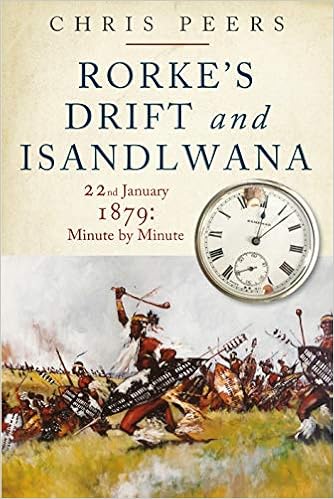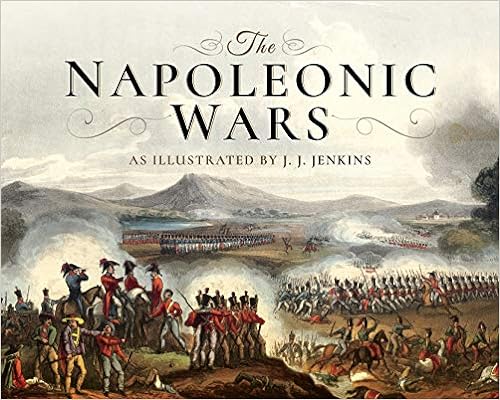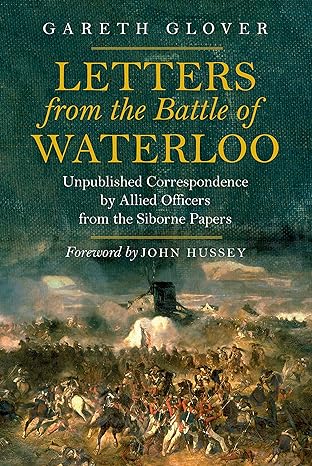The Genius of Sweden's "Lion of the North"
By Steve Wilson
In the skies over a modern battlefield a joint tactical air control team is often credited for carrying their platoon's “big gun,” or radio, as devastating airstrikes are vectored in from aircraft loitering in the battle space where friendly forces are taking fire. Laser guided munitions, global positioning systems, joint direct attack munition technology and real-time communications make it possible for military units to shape the battlefield to their advantage. However, coordinated efforts on an ever changing fluid battle space aren't new concepts. In fact, credit for this military innovation, and several others, belongs to Gustavus II Adolphus, King of Sweden, whose reign lasted from October 12, 1617 until his death in battle, Nov. 6, 1632.
Bacon's Rebellion: America's First Revolutionary?
By Walt Giersbach
Nathaniel Bacon was caught in a dilemma on a hot July day in 1676. The settlers’ avowed enemy, the Susquehannocks and their allies, were in front of him in the upper counties of Virginia while Governor William Berkeley’s English army and militia were getting ready to attack Bacon from the rear. Hundreds of landowners, indentured servants, slaves and other volunteers making up Bacon’s army waited for orders. Ever the strategist, the 29-year-old rebel addressed his army, “Gentlemen and fellow soldiers, the news just brought to me may not a little startle you as well as myselfe. The Governour is now in Gloster County endeavouring to raise forces against us, having declared us Rebells and Traytors…. They had rather wee should be Murder’d and our Ghosts sent to our slaughter’d Countrymen by their actings, than we should live to hinder them of their Interest with the Heathen.” [1]
Governor Kieft's Personal War
By Walt Giersbach
Americans today know little about the Dutch influence in the New York region except for odd place names like Harlem, Yonkers and Spuyten Duyvil. Or, the tale of Rip Van Winkle. Or, the bargain in which Pieter Stuyvesant bought an entire island for $25 worth of trinkets. For a brief period, the Dutch managed one of the most democratic, tolerant and socially liberal settlements in the New World. In contrast, one of its governors, Willem Kieft, will forever be known as the spiteful tyrant of New Amsterdam. In the wake of his administration lay more than a thousand dead Indians—men, women and children.* Such was the viciousness of his warfare that a contemporary complained to authorities in Holland that the Indians were being decapitated and burned alive by Kieft's soldiers.
Philip's War: America's Most Devastating Conflict
By Walt Giersbach
King Philip's War (1675-76) is an event that has been largely ignored by the American public and popular historians. However, the almost two-year conflict between the colonists and the Native Americans in New England stands as perhaps the most devastating war in this country's history. One in ten soldiers on both sides were wounded or killed. At its height, hostilities threatened to push the recently arrived English colonists back to the coast. And, it took years for towns and urban centers to recover from the carnage and property damage.
Winter of Discontent: The Siege of Osaka Castle
By Eric Niderost
In 1611 Tokugawa Ieyasu had every reason to be pleased with himself. His son Hidetada was Shogun, supreme warlord of Japan, but in truth it was Ieyasu who ruled the country behind the scenes. Tokugawa Ieyasu was the last in a series of powerful figures who had finally ended decades of internecine strife still know as the Sengoku Jidai, or "Age of the Country at War." [1] Ieyasu had himself been Shogun from 1603 to 1605, then "retired" ostensibly to enjoy the fruits of his hard-earned labors. Though in theory the Shogun was the servant of the Japanese emperor, in reality the emperor was little more than a revered figurehead. By officially handing over the reins of government to Hidetada Ieyasu was serving notice that the House of Tokugawa was the real dynasty of Japan. Little did the old samurai know that his family would rule until 1868, making it one of the most successful in the history of the island nation.
Last of the Redshanks: The Raid on Thurso, 1649
By Dr. Andrew McGregor
In the far north of Scotland the Highland mountains grow smaller, eventually leveling out into vast stretches of rolling countryside that end abruptly with rocky cliffs lurching out over the cold northern seas. Before the Celts arrived these lands were ruled by Norsemen, the powerful ‘Sea-Kings of Orkney'. The names of their settlements in Scotland's northeast county of Caithness reflected their beliefs, like the town of Thurso, named for the Norse god Thor. Though the town still stands after all these centuries, it came perilously close to obliteration one day in 1649. That year's raid on Thurso by a small group of veteran Irish fighters and a handful of Scottish highlanders is not found on any list of Scotland's great battles, but the raid was significant largely for one reason – it marked the last gasp of the once powerful Irish brigade (known as ‘Redshanks') that came to Scotland to aid the Marquis of Montrose and his Royalist forces during the British Civil War.
By Steve Wilson
In the skies over a modern battlefield a joint tactical air control team is often credited for carrying their platoon's “big gun,” or radio, as devastating airstrikes are vectored in from aircraft loitering in the battle space where friendly forces are taking fire. Laser guided munitions, global positioning systems, joint direct attack munition technology and real-time communications make it possible for military units to shape the battlefield to their advantage. However, coordinated efforts on an ever changing fluid battle space aren't new concepts. In fact, credit for this military innovation, and several others, belongs to Gustavus II Adolphus, King of Sweden, whose reign lasted from October 12, 1617 until his death in battle, Nov. 6, 1632.
Bacon's Rebellion: America's First Revolutionary?
By Walt Giersbach
Nathaniel Bacon was caught in a dilemma on a hot July day in 1676. The settlers’ avowed enemy, the Susquehannocks and their allies, were in front of him in the upper counties of Virginia while Governor William Berkeley’s English army and militia were getting ready to attack Bacon from the rear. Hundreds of landowners, indentured servants, slaves and other volunteers making up Bacon’s army waited for orders. Ever the strategist, the 29-year-old rebel addressed his army, “Gentlemen and fellow soldiers, the news just brought to me may not a little startle you as well as myselfe. The Governour is now in Gloster County endeavouring to raise forces against us, having declared us Rebells and Traytors…. They had rather wee should be Murder’d and our Ghosts sent to our slaughter’d Countrymen by their actings, than we should live to hinder them of their Interest with the Heathen.” [1]
Governor Kieft's Personal War
By Walt Giersbach
Americans today know little about the Dutch influence in the New York region except for odd place names like Harlem, Yonkers and Spuyten Duyvil. Or, the tale of Rip Van Winkle. Or, the bargain in which Pieter Stuyvesant bought an entire island for $25 worth of trinkets. For a brief period, the Dutch managed one of the most democratic, tolerant and socially liberal settlements in the New World. In contrast, one of its governors, Willem Kieft, will forever be known as the spiteful tyrant of New Amsterdam. In the wake of his administration lay more than a thousand dead Indians—men, women and children.* Such was the viciousness of his warfare that a contemporary complained to authorities in Holland that the Indians were being decapitated and burned alive by Kieft's soldiers.
Philip's War: America's Most Devastating Conflict
By Walt Giersbach
King Philip's War (1675-76) is an event that has been largely ignored by the American public and popular historians. However, the almost two-year conflict between the colonists and the Native Americans in New England stands as perhaps the most devastating war in this country's history. One in ten soldiers on both sides were wounded or killed. At its height, hostilities threatened to push the recently arrived English colonists back to the coast. And, it took years for towns and urban centers to recover from the carnage and property damage.
Winter of Discontent: The Siege of Osaka Castle
By Eric Niderost
In 1611 Tokugawa Ieyasu had every reason to be pleased with himself. His son Hidetada was Shogun, supreme warlord of Japan, but in truth it was Ieyasu who ruled the country behind the scenes. Tokugawa Ieyasu was the last in a series of powerful figures who had finally ended decades of internecine strife still know as the Sengoku Jidai, or "Age of the Country at War." [1] Ieyasu had himself been Shogun from 1603 to 1605, then "retired" ostensibly to enjoy the fruits of his hard-earned labors. Though in theory the Shogun was the servant of the Japanese emperor, in reality the emperor was little more than a revered figurehead. By officially handing over the reins of government to Hidetada Ieyasu was serving notice that the House of Tokugawa was the real dynasty of Japan. Little did the old samurai know that his family would rule until 1868, making it one of the most successful in the history of the island nation.
Last of the Redshanks: The Raid on Thurso, 1649
By Dr. Andrew McGregor
In the far north of Scotland the Highland mountains grow smaller, eventually leveling out into vast stretches of rolling countryside that end abruptly with rocky cliffs lurching out over the cold northern seas. Before the Celts arrived these lands were ruled by Norsemen, the powerful ‘Sea-Kings of Orkney'. The names of their settlements in Scotland's northeast county of Caithness reflected their beliefs, like the town of Thurso, named for the Norse god Thor. Though the town still stands after all these centuries, it came perilously close to obliteration one day in 1649. That year's raid on Thurso by a small group of veteran Irish fighters and a handful of Scottish highlanders is not found on any list of Scotland's great battles, but the raid was significant largely for one reason – it marked the last gasp of the once powerful Irish brigade (known as ‘Redshanks') that came to Scotland to aid the Marquis of Montrose and his Royalist forces during the British Civil War.





